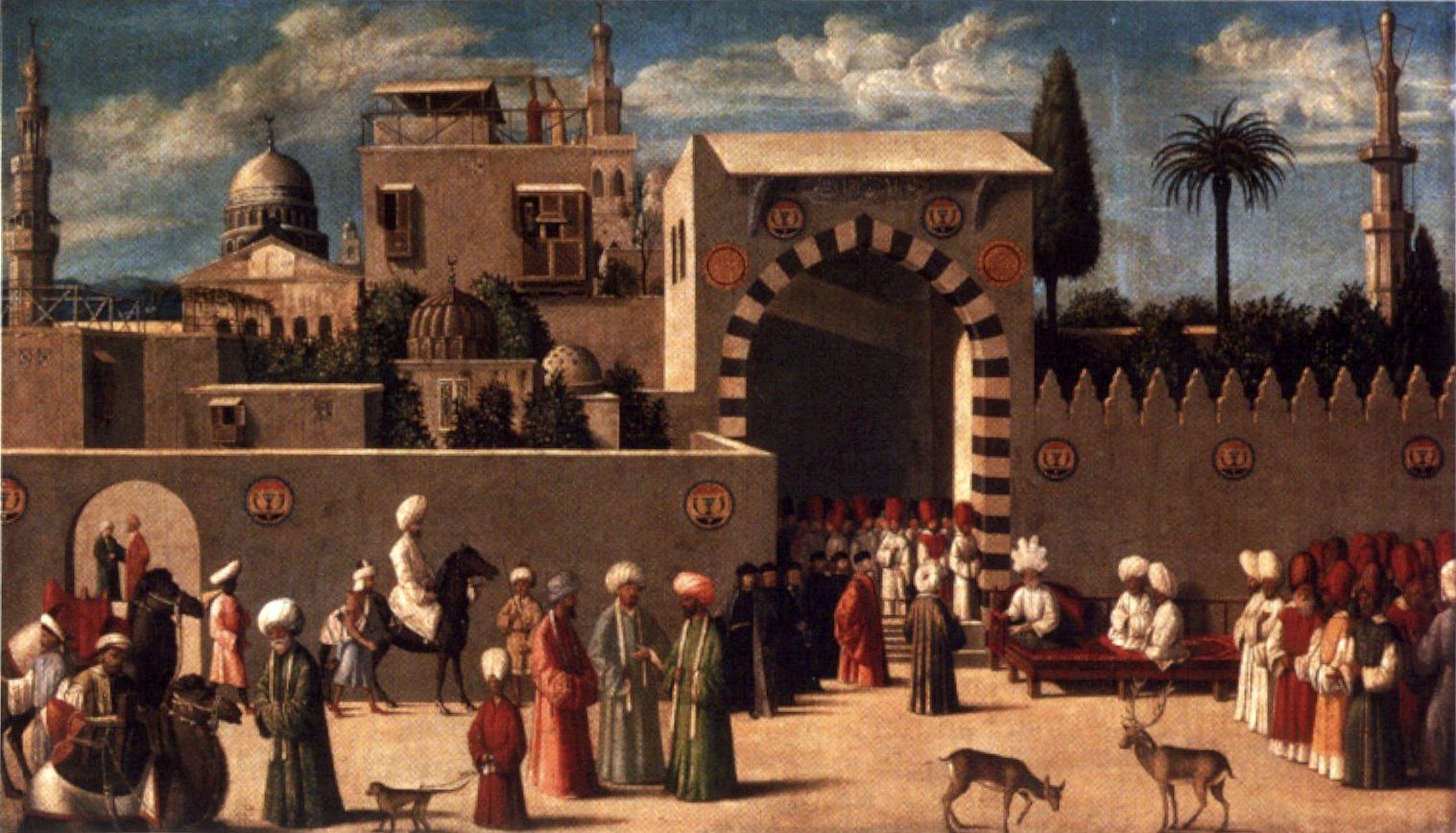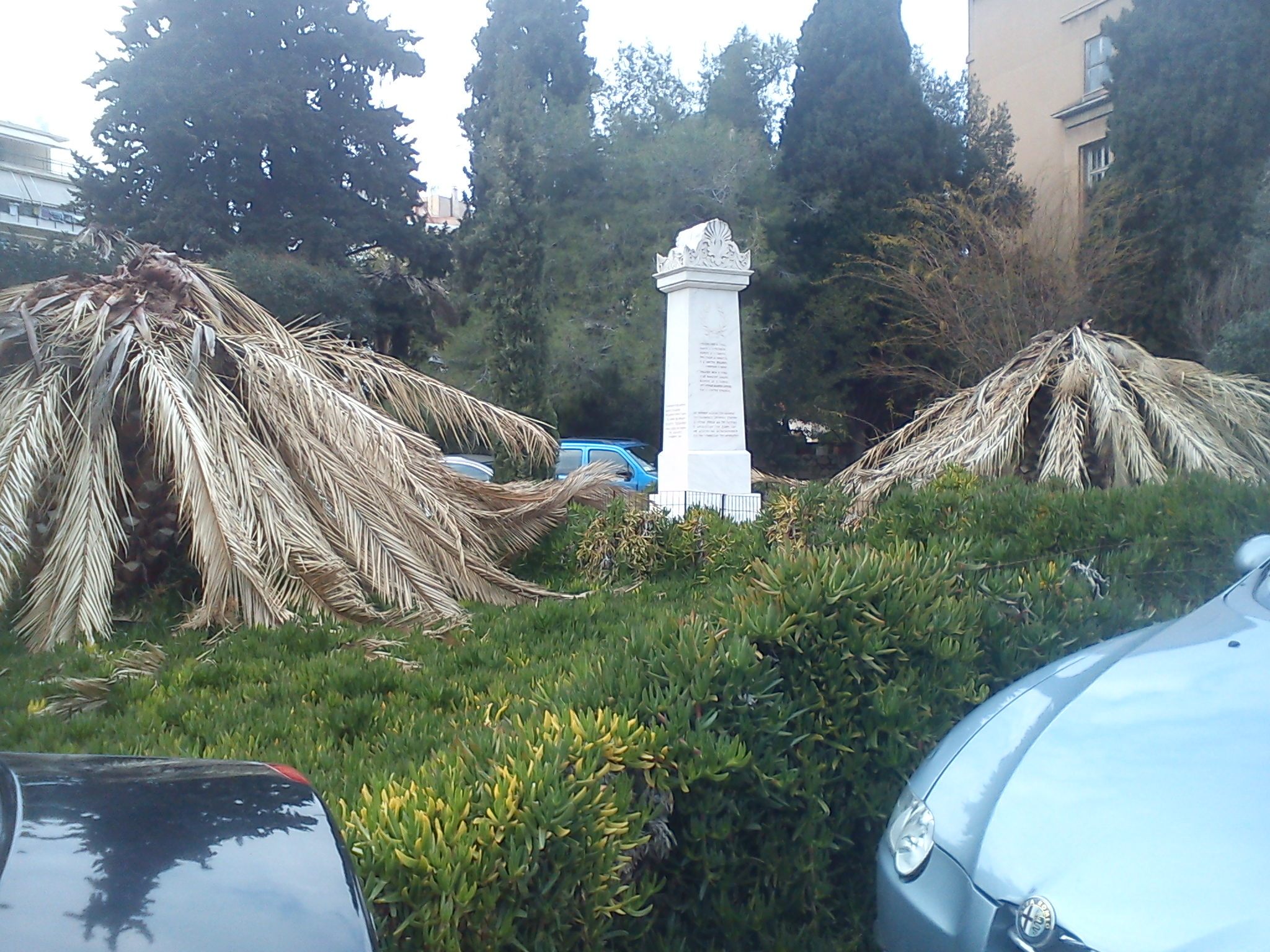Palm Trees Have Vanished All Over Athens, But Not For The Reason People Think

Work in progress on ”Imagine a Palm Tree…” Navine G. Khan-Dossos’s artistic exploration of the palm in Athenian culture. (Photo: Navine G. Khan Dossos)
Once upon a time, in a mythological Greece, a half-Titan named Latona had an affair with Zeus and brought down the wrath of the goddess Hera. Pregnant and fleeing for her life, she found shelter on Delos, a “lightly floating island” that, because of its geographical autonomy, served as a safe haven. There, the poet Ovid writes, “between an olive tree and a date palm,” she gave birth to the gods Artemis and Apollo.
Eons later, palm trees—their presence, their provenance, their comings and goings—remain a frequent topic of discussion in Athens. “Everyone I meet has a palm tree story,” says Navine G. Khan-Dossos, an artist and a relative newcomer to the city, for whom the palm tales have become a “micro-obsession.” There’s one in particular she hears over and over again: that the Athenian government, at one point in the 19th or 20th century, went on a palm destruction spree, shearing the streets of the tall, slender trees in order to give the city a kind of cultural makeover, away from Middle Eastern aesthetic trends and towards European ones.
There is no doubt that the city has lost many palms since the 1800s, when, as one historian describes it, it was known for ”its palm trees, its camels, and its mosques.” The city had to truck thousands of new ones in from North Africa when they hosted the Olympic Games in 2004. But was the palmicide an act of historical whitewash? Can you change the cultural identity of a place by removing its trees?

“The Reception of the Ambassadors in Damascus,” an anonymous Venetian painting from 1511, sets the scene with a palm. (Image: WikiCommons/Public Domain)
The purposeful removal of palms isn’t so hard to imagine. In many ways, Greece is a country caught between regions. Although it’s solidly European both continentally and politically, due to its its long stint under Ottoman rule, Greece “shares cultural traits with countries in the Middle East and with countries all around the Mediterranean,” Artemis Leontis, a professor of Modern Greek, told the International Business Times in 2011. Meanwhile, while the palm offers a panoply of associations—Christian martyrdom, Islamic devotion, tropical relaxation–for many centuries, it served largely as a kind of symbolic shorthand for the global East. “In Orientalist painting in the 18th and 19th centuries, you always get these palm trees,” says Khan-Dossos. “If Athens did decide they wanted to break away from this [association], then removing that tree removes that shortcut.”
Try to find actual evidence of a plot against palms, though, and things get muddy. Some who relay the story place the trees’ removal at the end of the Ottoman empire, when Greece gained its independence from Turkey. Others trace it to World War II, when the Nazis occupied Greece and destroyed much of its infrastructure. Still others pin it on the Junta, who ruled Greece for seven years in the 1950s and ‘60s after a military coup and who, according to historian Yiannis Papadakis, also changed the name of the citizens’ favorite coffee from “Turkish” to “Greek.”

Omonia Square in 1900, decked out with palms. (Image: MB-E/Flickr)
Unmoored in time, and caught up in Athens’s wide-ranging oral storytelling tradition, the tale acts like “kind of an urban legend,” suspended between symbolic and actual history, says Khan-Dossos. To see what might lie underneath it, she has teamed up with Nikos Thymakis, the founder and president of the Hellenic Palm Society. Thymakis, a horticulturist, points out that it doesn’t necessarily take a vendetta to kill a palm. Lack of water or lack of care—both side effects of the kind of municipal neglect that comes with tumultuous times—will do the trick. “Every time I research, the real reason for the removal of the palm trees turns out to be much more practical than symbolic,” says Khan-Dossos, even if the consequences are emotional.
Take the depalming of Omonia Square, a central meeting place in Athens. For a brief period at the turn of the 20th century, Omonia Square was covered in palm trees, which splayed over the streets like shade-bringing giants. The palms reigned over the square until 1927, when they were chopped down en masse to make room for ventilation shafts for a major metro stop. Now the square, which will host the next Athens Biennale, is essentially a concrete slab–even though the train hub underneath it means it’s the first taste of Greece for many, including newly arriving refugees.

Dead palms in front of an Athenian hospital. (Photo: Ιωάννης Πρωτονοτάριος/Flickr)
Meanwhile, in a strange twist, a more recent and definitively symbolic decision is now decimating Athens’s remaining palms. Walk around the city today, and you’ll see a number of dead and dying trees, their normally proud leaves brown and droopy or their heads broken clean off. They’ve fallen prey to the invasive red palm weevil, a thumbnail-sized beetle that gnaws holes in palm fronds. These weevils were likely brought over in 2004, along with palms imported from North Africa in order to give the Olympic Games an exotic feel for athletes and tourists. Thanks to the hitchhiking beetle, “all of those trees that were planted are on their way out,” says Khan-Dossos, “and the ones that were here before that are also suffering.”
Horticulturists in Athens are trying to save what trees are left. In the meantime, Khan-Dossos is hard at work on “Imagine a Palm Tree…”, an immersive mural that will turn the top floor of the Benaki Museum’s Islamic Art Collection into a huge forest of ceiling-high palms. She hopes the exhibit, which runs through September, will serve as a space for people to discuss palms—their presence, their provenance, their comings and goings, and everything they imply.
“Imagine if the refugees arrived and they were in a massive palm garden,” says Khan-Dossos. “It would be quite different.”
Naturecultures is a weekly column that explores the changing relationships between humanity and wilder things. Have something you want covered (or uncovered)? Send tips to cara@atlasobscura.com.



























Follow us on Twitter to get the latest on the world's hidden wonders.
Like us on Facebook to get the latest on the world's hidden wonders.
Follow us on Twitter Like us on Facebook